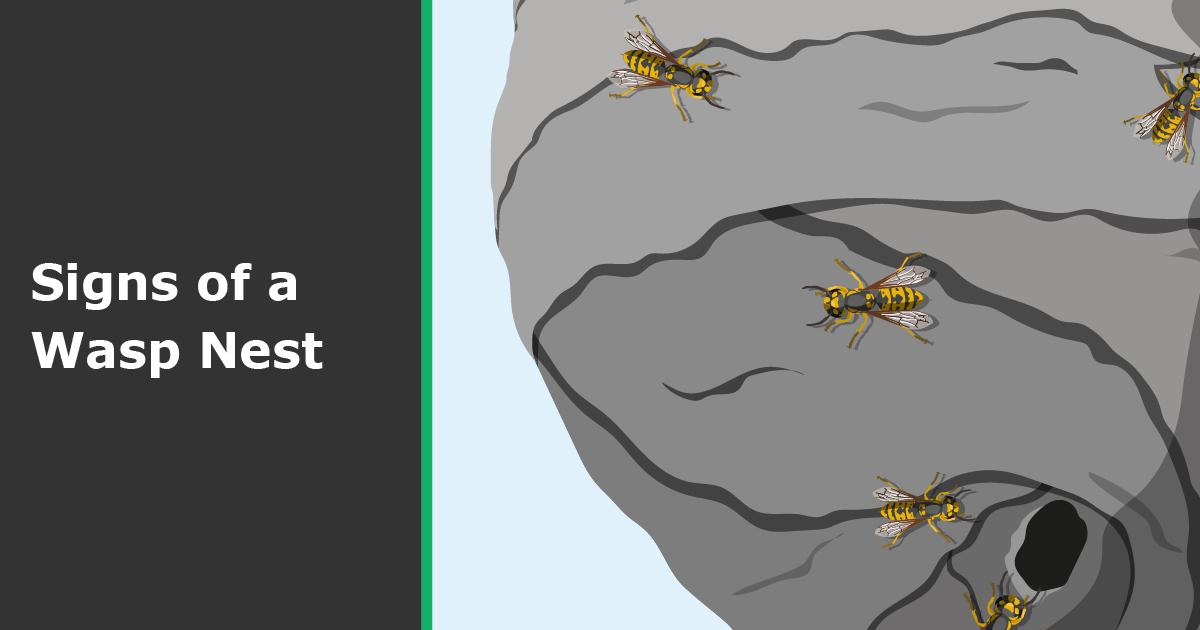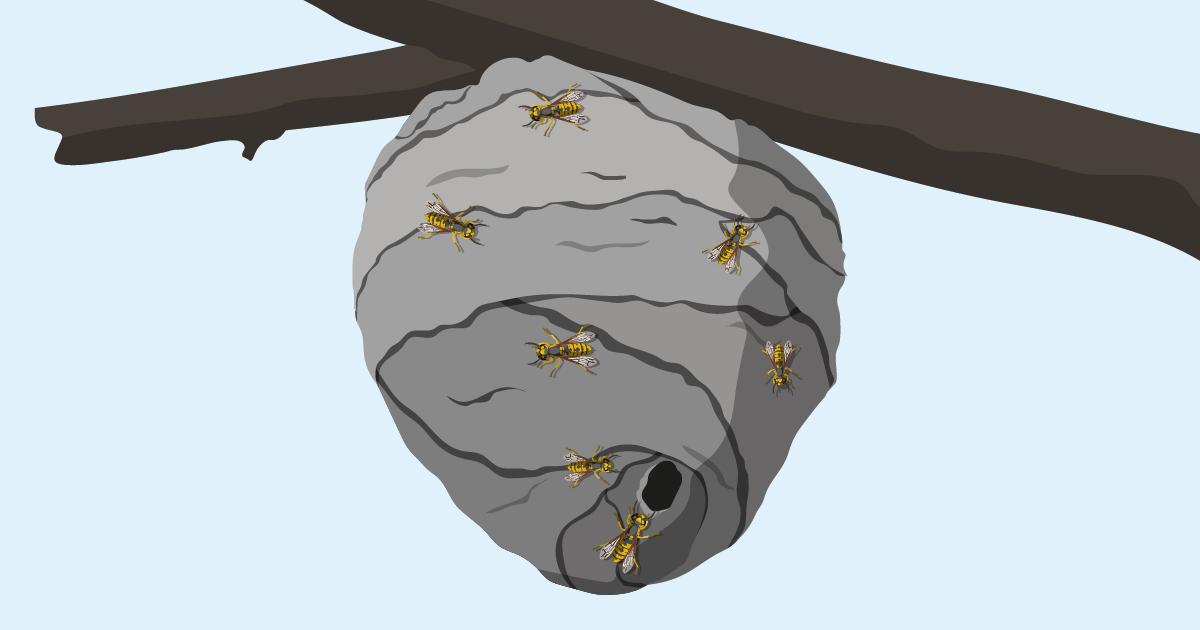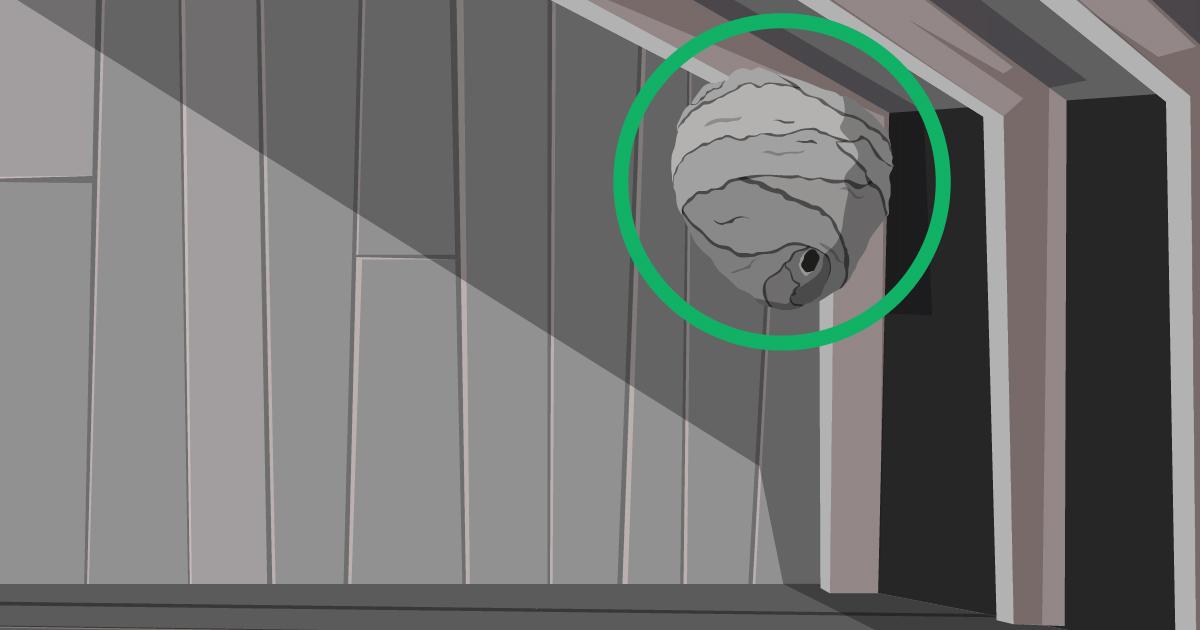4 Signs of a Wasp Nest To Look Out For
Summertime means fresh air and plenty of time to enjoy the outdoors. But if you’ve got wasps on your property at home, in the beer garden of your restaurant or anywhere on your business premises, it can really sour the mood.
Plenty of people are skittish about wasps, and their ability to sting at will means there’s good reason to be. If there is a wasp nest on your property, then it’s a real issue, but one that can hopefully be dealt with to avoid driving people away. So how do you go about identifying signs of a wasp nest?
This month at Pest Defence, we’ll guide you through what to look out for, as well as the common locations and even how to prevent wasp nests from appearing in the first instance.
But remember, if you come across a wasp nest on your property, don’t take risks when it comes to your safety or the safety of staff and customers — call us for safe, efficient wasp nest removal!

How do you know if you have a wasp nest?
Here are four tell-tale signs that you have a wasp nest nearby that you can look out for:
- Swarms – It’s not odd to find insects outdoors, but if you find more than a couple of wasps lingering around your garden, then it’s a sign that they have a nest nearby. Swarms of wasps will be foraging for food and nesting materials, so this activity should tip you off to the presence of a nest.
- Buzzing – It may seem obvious, but if you can hear a buzzing sound from close by, especially if you’re indoors, then you can probably be certain that it’s a wasp nest. Wasps make quite loud noises when building a nest, often coming from roof, attic or rafter spaces.
- Wasps indoors – Finding wasps indoors in increasing numbers is another cause for concern. This is especially true if you don’t have any windows open, as it means they’re likely nesting within the structure of your building and are finding small holes and gaps to travel through.
- Visible Nest – The structure of a nest is the most obvious sign as it will certainly look out of place. You can read our next section to find out exactly what you should be looking for when trying to identify a wasp nest.
What does a wasp nest look like?

Wasp nests are made from wood and papery materials that the workers have chewed and broken down to layer up. It will often take a dull grey or brown colour with a swirling pattern to it. While the size can vary depending on how large the colony is and the time of the year, you’re more likely to spot it once it reaches the size of a football than when it first starts at the size of a golf ball.
Common wasp nest locations

Where are you likely to find a wasp nest? Well, there are several common places wasps like to build their nest, including:
- In loft spaces
- In eaves and under-roof spaces
- In garden sheds
- In wall cavities
- In bird boxes
- In garages
- In trees
Essentially, wasps like quiet, remote spaces where they’re unlikely to be disturbed, which means you’ll often only notice them once they’re fully developed.
How to prevent wasp nests
Prevention is often the best cure, but as we just mentioned, wasps like to nest in places that you’re not often in, so how can you stop them? Here are four things you can do to make creating a nest difficult for wasps:
- Maintain your property – fill in any gaps, cracks and holes to limit the points of entry into the building, especially around your roof.
- Keep your bins secure – external bins offer a food source for worker wasps, so cut this off by keeping bins clean and secure and you’ll be less likely to attract them to your property in the first place.
- Fit fly screens – fitting a screen over doors and windows can help to get much-needed ventilation in summer while preventing access to insects such as wasps.
- Wasp traps – you might be able to put wasps off with wasp catchers you can buy in general DIY stores, keeping them at bay.
What to do if I find a wasp nest

If all of the above has come too late, it’s always recommended that you seek professional pest control from the experts. Here at Pest Defence, we will assess your property to take the best course of action regarding wasp nest removal.
The important thing to remember is that you should never attempt to remove a wasp nest yourself unless you have the experience and the correct tools, as you risk injuring yourself and others around you — you could also end up damaging your property, too.
With over 30 years of experience providing wasp control services to London and Essex – including in and around Colchester, Chelmsford and Brentwood – you can count on us whether you’re running a pub, restaurant, leisure centre, office building or any other commercial space. We even deal with wasp colonies for homeowners under siege.
Call today and our friendly team will be happy to help you.
